

Marvel Comics Presents ran for 175 issues from 1988 until 1995. Each issue included four eight-page stories with typically two or three on-going features (and no ads). It spotlighted some of the leading creators of mainstream comics over a period of precipitous economic growth and even more rapid decline. Reading through it is an opportunity to revisit any number of weird aspects of 90s superhero comics. This blog is a primitive, oddly regimented, manifestly scattershot crawl through an often disappointing but occasionally splendid comic. All image copyrights are Marvel's. Issue credits linked below. Updated on Wednesdays.
Marvel Comics Presents #31: Early November 1989(4.22.20)
Credits: grandcomicsdatabase

John Bogdanove sprays Havok, Plasma, Excalibur, and the ersatz Looney Tunes across a tepid cover, though hopefully this marks the last of the present design nightmare. Coldblood is overcooked on the rear, which makes the P. Craig Russell credit especially surprising, but the (apparently craft-tinted) Black Panther is pleasantly dimensional and shadowy.
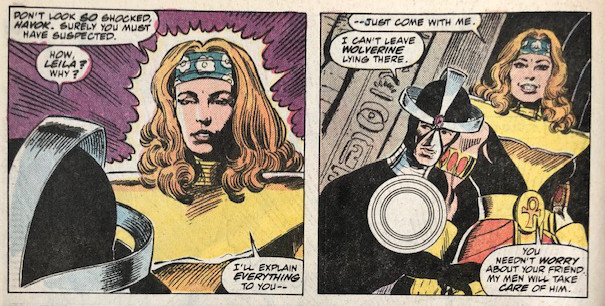
A. Havok, "Pharaoh's Legacy" [8/8]
Patterson seems to have thankfully elbowed Buckler aside for the perfunctory concluding installment. Leila explains her inchoate psychic bond with Alex as well as her need to absorb his blast energy to complete her transformation. The backstory is, of course. undercooked and ludicrous, but the tone here is baffling, too, careening from sinister to trite to indifferent.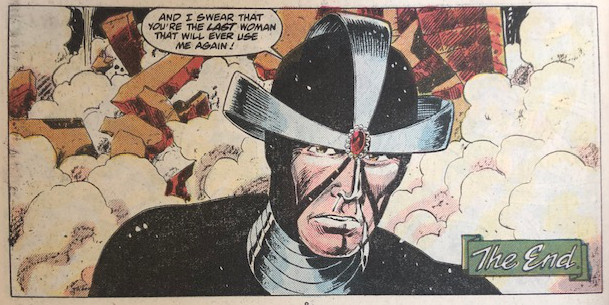
Wolverine has no real role here and the story ends on a fitting note with Alex's headpiece looking just like a busted cowboy hat as he cluelessly proclaims that he'll never allow women to take advantage of him again. He is, it seems, more concerned about women then apocalyptic death cults. A not so fond farewell to a crumby feature.
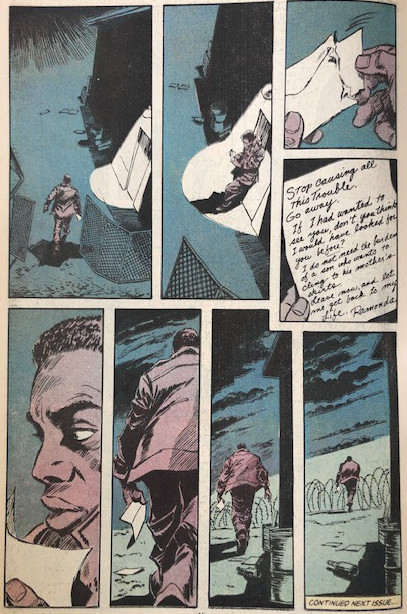
B. Black Panther, "Panther's Quest" [19/25]
Slade departs the story here and a letter from T'Challa's mother emerges. The density of the script here is the highest we've yet seen in this feature with pages dripping with exegesis. Rather remarkably, Jade Moede steps in for Joe Rosen without much appreciable difference aside from a softening of the jagged narrative captions. Rockwitz plays around with some bright oranges and purples throughout and, to Colan's credit, the payoff arrives in the final page with a wordless, pensive depiction of T'Challa reading his mother's letter. For what has been a pleasantly overstuff affair, it's a sedate moment that goes nicely to plan.
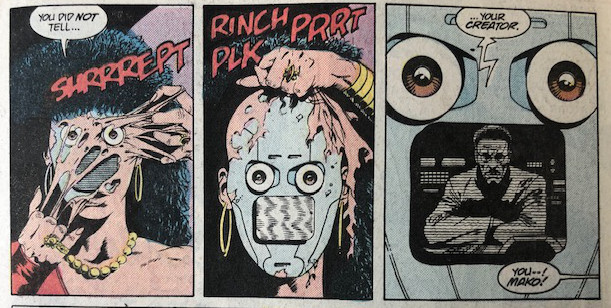
C. Coldblood, "Rise and Shine" [6/10]
Coldblood's creation is told via flashback with an increasingly inchoate cast implicated in a variety of less than clear ways. Gulacy renders these environments with an eye that's equal parts surgical and cinematic and manages a grotesque, science fiction sequences as a cyborg sex-worker rends her face off to reveal a television screen underneath.
Glynis Oliver pulls out a few more neat tricks here, with a magenta color hold stanza of panels that manage considerable intensity while also going proxy for a display screen. The question that seems to be emerging is, for all the artistic success here, what's the narrative failing--apparent from the Deathlok recycling--that explains why this feature is sputtering out. The absence of a visual interesting counterpoint or the sluggish conspiracy that can't be payed off in ten installments.
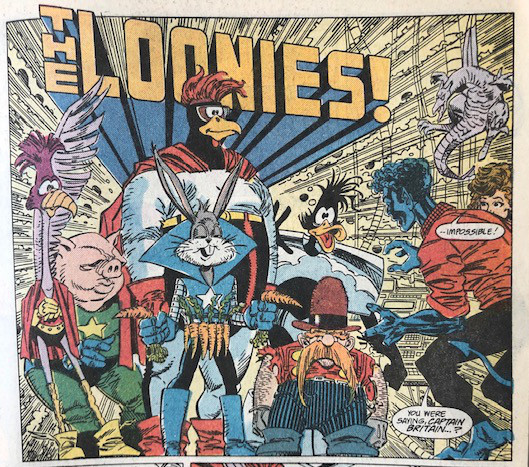
D. Excalibur, "Having a Wild Weekend" [1/8]
The first proper team feature, apart from some duos and Damage Control. Erik Larsen brings a manic energy to the proceedings which squares nicely with the Looney Tunes assaulting Excalibur and swiftly capturing them. Larsen grapples at times unsuccessfully with faces, but the depth and physicality are tremendous and punctuated by panels that range across the saddle for a splash-like effect. It's a happily, breakneck introductory installment.
Power Ranking: Excalibur (B+), Coldblood (B), Black Panther (B), Havok (C)